“Excellent quality, generous quantity and variety. Superb value.”
— Bill, Erwinna, PA
The following is a list of all the crops we grow, including information about storage, nutrition, and common preparation methods. We try to update this list each winter, based on our crop plan for the coming season. Enjoy!
Please Note: Although we wash most of our crops immediately after they are harvested, you should always clean your produce thoroughly before eating it.
Click on the name of a vegetable to see a list of recipes that use it!
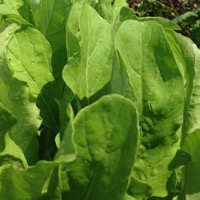
- Flavor: spicy, peppery, heady
- Nutrients: Vitamins A, C, calcium, folate, iron, manganese, magnesium, phosphorus, potassium
- Common Uses: Enjoy raw in salads, add to sandwiches, saute with olive oil, steam lightly, or use in pesto recipes (in place of basil).
- Storage: In a plastic bag in the refrigerator for 2-5 days. Best if first rinsed & spun dry in a salad spinner.

- Flavor: fragrant, sweet
- Nutrients: Vitamins A, C, K, calcium, fiber, folate, iron, magnesium, manganese, potassium
- Common Uses: Enjoy raw; use to infuse olive oil or vinegar; combine with Parmesan, pine nuts and olive oil to create pesto; or dry. When cooking, add at the end of preparation to maximize flavor.
- Storage: Use a ziploc or plastic bag in the refrigerator for a few days. Larger stems or whole plants: In a cup of water on the countertop for up to a week. Can grow in a small pot for several weeks. Whole or chopped leaves can be frozen on their own or in broth or water for later use. Can freeze pesto in ice trays and use like bullion cubes.
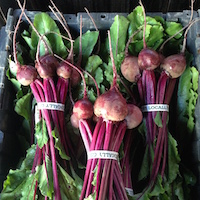
- Flavor: earthy and very sweet when cooked
- Nutrients: Vitamins C, fiber, folate, iron, magnesium, manganese, potassium
- Common Uses: You don’t have to peel them if you don’t want to. Grate raw beets for use in salads; steam or saute; roast with other vegetables or bake like potatoes. Saute greens with other braising greens like mustard greens or chard.
- Storage: Separate greens from roots. Greens may be stored in a plastic bag for about four days in the refrigerator. Roots will keep for many weeks in the crisper.

- Flavor: raw bitterness mellows to light, crisp, sweetness when cooked
- Nutrients: Vitamins A, B6, C, K, calcium, fiber, folate, iron, magnesium, manganese, niacin, phosphorus, potassium, protein, thiamin
- Common Uses: Eat raw or cooked. Trim tough root end (about 1″ from base), separate leaves and wash thoroughly. Stalks can be chopped, leaves rolled up and cut into thin strips for stir-fry, braising or as an addition to soups.
- Storage: Wash, towel dry, and put in an unsealed plastic bag. Keep for 5 to 7 days.
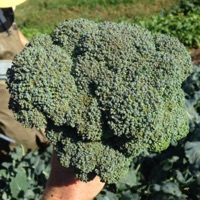
- Flavor: Tastes just like broccoli!
- Nutrients: Vitamins A, B2, B5, B6, C, K, calcium, fiber, folate, iron, magnesium, manganese, phosphorus, potassium, protein
- Common uses: Enjoy raw or boil, steam, saute, stir-fry, bake or roast.
- Storage: In a bag in the refrigerator for a week. Broccoli can also be blanched and frozen for later use.
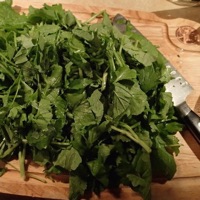
- Flavor: nutty and slightly bitter
- Nutrients: Vitamins A, C, K, calcium, fiber, folate, iron, potassium
- Common uses: Trim tough ends of stems. Eat raw or blanch then saute with garlic and olive oil. Can also roast, steam or stir fry.
- Storage: In a plastic bag in the refrigerator for about 5 days. Best if first rinsed & spun dry in a salad spinner.
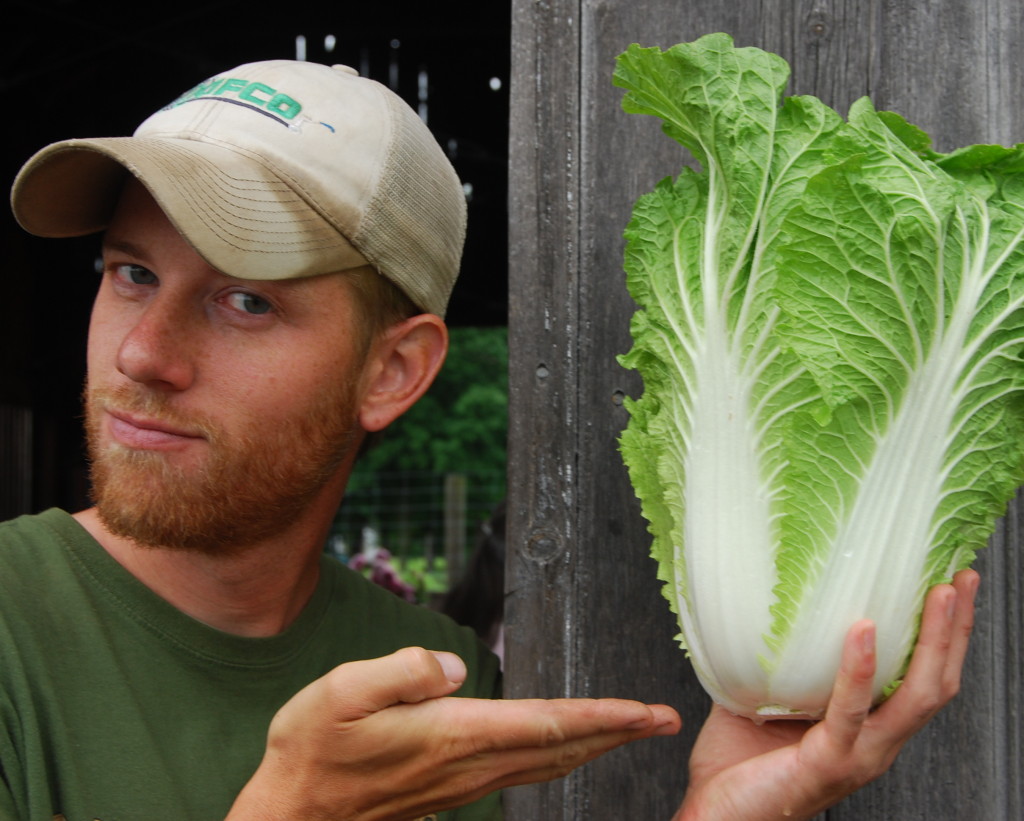
- Flavor: a mild member of the cabbage family
- Nutrients: Vitamin C, calcium, fiber, folate, manganese, potassium
- Common uses: Eat raw or cooked. Cut head in half lengthwise, remove core and discard. Separate, wash and dry leaves. Shred for use in salads, slaws, stir-fry or soups. Blanch and stuff, or use as a wrap for other ingredients prior to steaming.
- Storage: In sealed bag or container in the refrigerator until ready to use. Wrap partial heads in plastic and eat within a few days.
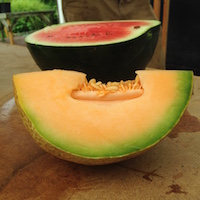
- Flavor: sweet and syrupy
- Nutrients: superb source of vitamins A and C. Also a source of potassium.
- Common uses: Enjoy by itself, added to yogurt, mixed into fruit salads.
- Storage: In the refrigerator for about a week. Best if eaten immediately.
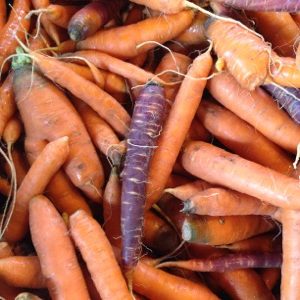
- Flavor: sweet and crunchy
- Nutrients: Vitamins A, B6, C, K, calcium, fiber, folate, iron, potassium, magnesium, manganese, niacin, phosphorus, thiamin
- Common uses: Enjoy raw or cooked. Use in salads, soups, side dishes and juices.
- Storage: Store in a plastic bag in the fridge or loose in the crisper for many weeks.
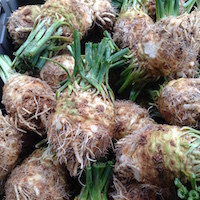
- Flavor: globe-like root with earthy, celery flavor
- Nutrients: Vitamins B9, C, fiber, potassium
- Common uses: Saute, boil, roast, mash or puree for use in side dishes, soups and sauces. It’s basically a magic potato. Best roasted or in soup.
- Storage: In a plastic bag in the refrigerator or in the crisper for up to a month.
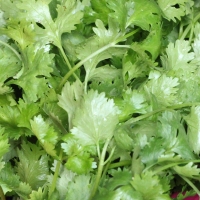
- Flavor: heady, nasal spiciness, citrus
- Nutrients: vitamins A, C & K. Dietary fiber, calcium, selenium, iron, magnesium, manganese.
- Common uses: salsa, soups
- Storage: In a plastic bag in the refrigerator for up to a week.
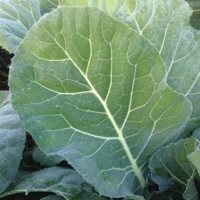
- Flavor: mild, rich, ever-so-slightly sweet in cold weather
- Nutrients: A very good source of Dietary Fiber, Vitamin A, Vitamin C, Vitamin E (Alpha Tocopherol), Vitamin K, Riboflavin, Vitamin B6, Folate, Calcium and Manganese
- Common uses: Lightly steamed or sauteed. Can be eaten raw or in soups.
- Storage: In a plastic bag in the refrigerator for up to a week.
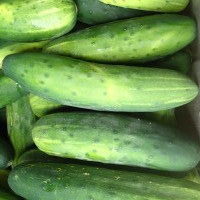
- Flavor: watery, cooling, refreshing
- Nutrients: Vitamins A, C, fiber, folate, magnesium, manganese, molybdenum, potassium
- Common uses: Enjoy raw in salads, cold soups, on sandwiches or pickled.
- Storage: In the refrigerator for several days.

Daikon (Japanese White Radish)
- Flavor: peppery-spicy when raw; mellow when cooked
- Nutrients: Vitamins A, C, and E
- Common uses: Sauted (especially in sesame oil). Added to soups. Grated and used as a condiment. Pickled.
- Storage: In the crisper drawer of the refrigerator for a week or 10 days.

- Flavor: aromatic with a mild anise flavor
- Nutrients: A very good source of Vitamin A, Vitamin C, Riboflavin, Vitamin B6, Folate, Calcium, Iron, Magnesium, Potassium and Manganese.
- Common uses: Used to flavor potato salads, pickles, fish, beans, etc.
- Storage: In a plastic bag in the fridge for a few days.

- Flavor: spongy in texture with mild bitterness
- Nutrients: Vitamins B1, B3, B6, copper, fiber, folate, magnesium, manganese, potassium
- Common uses: Bake, grill, or roast. Eggplant is also the key ingredient in Baba Ghanoush, a dip common to Middle Eastern cuisine and made with garlic, lemon juice, olive oil and tahini (sesame seed paste).
- Storage: In plastic bag in the fridge for a few days.
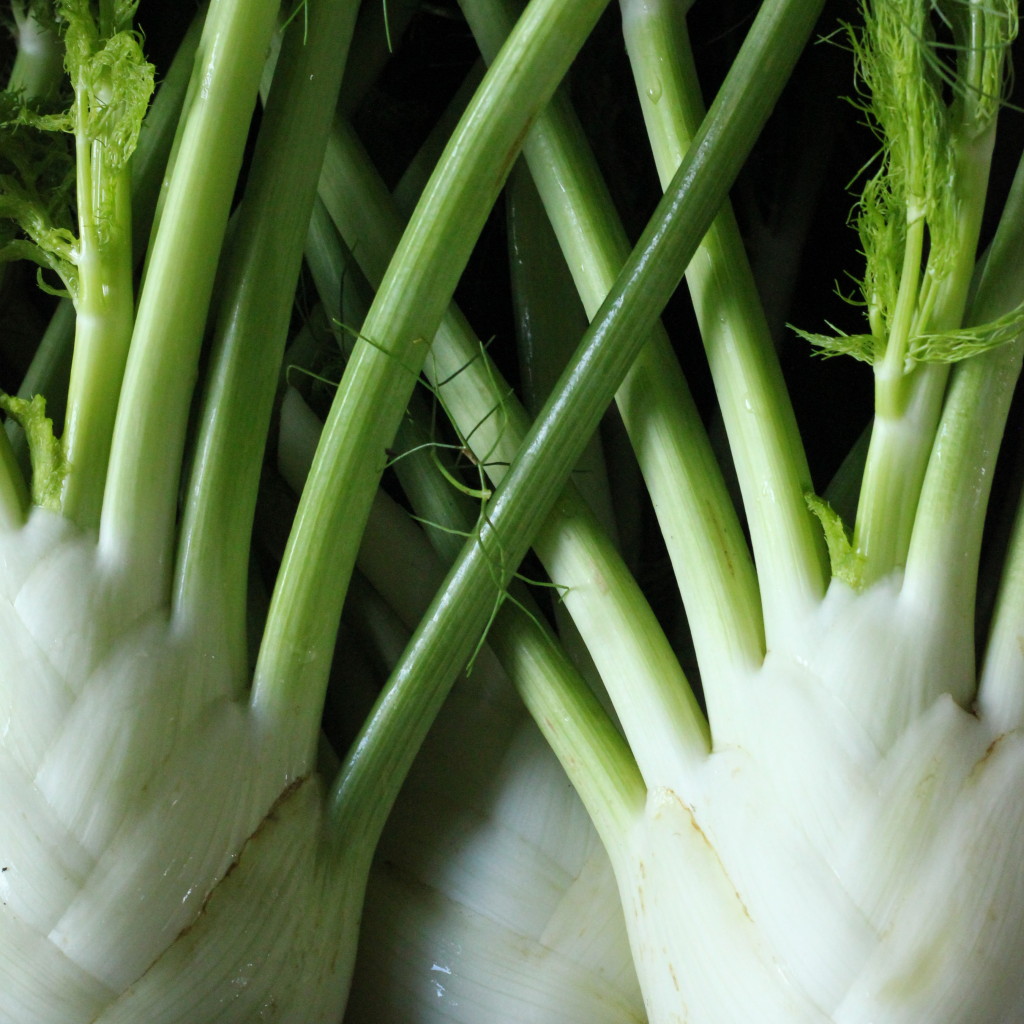
- Flavor: aromatic & sweet
- Nutrients: Fennel is a great source of Vitamin C, dietary fiber, and potassium
- Common uses: raw in salads (especially when paired with citrus), roasted, braised, or in soups. With pork. Both the leaves and the bulb can be used.
- Storage: In a plastic bag in the refrigerator for about a week.

Flowers
- Flavor: Although our flowers are grown mainly for decorative purposes, the marigolds and nasturtiums are edible. Also, the calendula and echinacea have medicinal uses.
- Common uses: Displayed in vases. Sometimes dried. Edible flowers are often used raw to decorate salads.
- Storage: Fresh flowers usually last roughly a week in a vase. The gomphrena and celosia will dry very well and can be enjoyed year round.
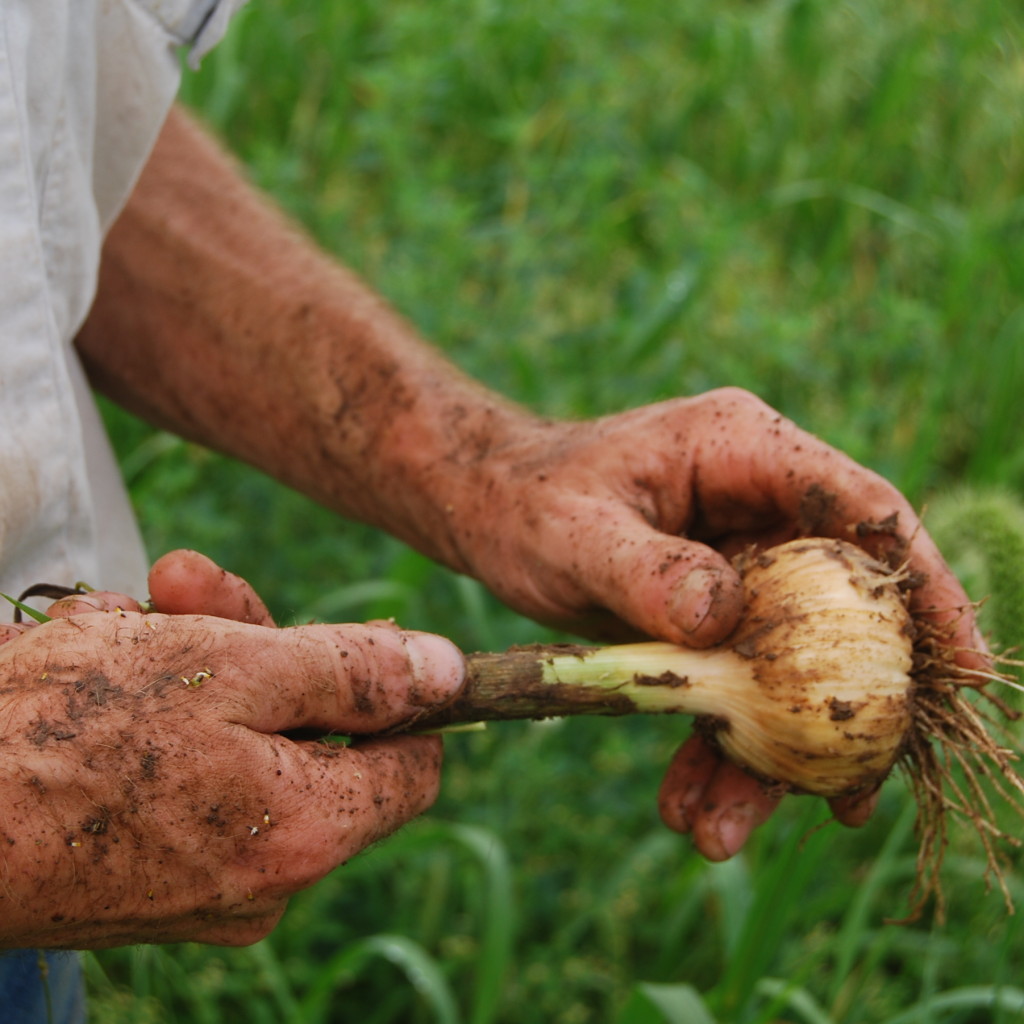
- Flavor: strong, sharp, spicy
- Nutrients: Vitamin B6, C, calcium, manganese, phosphorus, selenium
- Common uses: Chop, crush or mince and use in various recipes; roast, saute, grill.
- Storage: In a cool, dark place with plenty of air flow or on the counter top.

- Flavor: This is the green flower stalk of the plant. Garlic flavor but milder than raw cloves. Extremely good.
- Nutrients: Vitamins B6, C, calcium, manganese
- Common uses: Eat raw in salads, let soak in a homemade dressing; use when a recipe calls for garlic cloves or green onions; saute, stir-fry, pickle, or create a pesto with walnuts and cheese.
- Storage: Loosely in a bag in the refrigerator for a couple weeks or chop and freeze for future use.
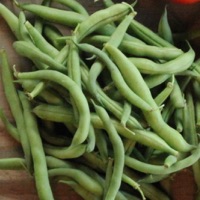
- Flavor: wonderful
- Nutrients: Vitamins A, B1, B2, B3, C, K, calcium, copper, fiber, folate, iron, magnesium, manganese, potassium, phosphorus, protein, omega-3 fatty acids
- Common uses: Rinse just prior to preparing. Enjoy raw, saute, steam, or roast.
- Storage: In plastic bag in the refrigerator for up to 7 days. Beans can also be blanched and frozen or canned for later use.
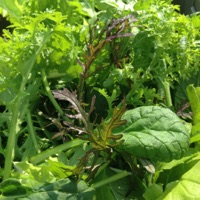
- Flavor: This is a relatively mild mix of salad greens.
- Nutrients: Excellent source of Vitamins A and C. Good source of iron.
- Common uses: Raw in salads. Can also be used as a braising mix, or in soups.
- Storage: In plastic bag in the refrigerator for a few days. Best if first rinsed and spun dry in a salad spinner.
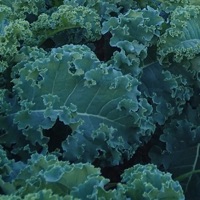
- Flavor: slightly bitter leafy green
- Nutrients: Vitamins C, K, beta carotene, calcium, fiber, manganese
- Common uses: Tear leaves from stems, wash well and drain. Kale can be good raw in salads if massaged well with dressing. Saute, braise, blanch or steam mature kale for use as a side dish or in soups. Toss in olive oil, a bit of salt and bake or grill (“kale chips”).
- Storage: Store in a plastic bag in refrigerator for up to a week.

- Flavor: silky to buttery to crunchy and slightly bitter
- Nutrients: Vitamins A, B6, C and K, calcium, fiber, folate, iron, manganese, potassium, riboflavin, thiamin
- Common uses: The classic salad base. Also can be added to sandwiches and used as a wrap for savory items.
- Storage: Store in plastic bag in the refrigerator or remove whole leaves from the outside moving inward and rinse the leaves in a salad spinner. The remaining, undisturbed inner core can last even longer.
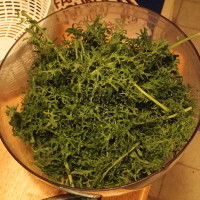
- Flavor: robust and spicy mustard flavor
- Nutrients: Vitamins A, C and E, beta carotene, calcium, magnesium, potassium, protein
- Common uses: Enjoy raw in salads, sauteed with olive oil and garlic, boiled or steamed just until leaves are wilted.
- Storage: In plastic bag in the refrigerator for 2-5 days. Best if first rinsed and spun dry in a salad spinner.
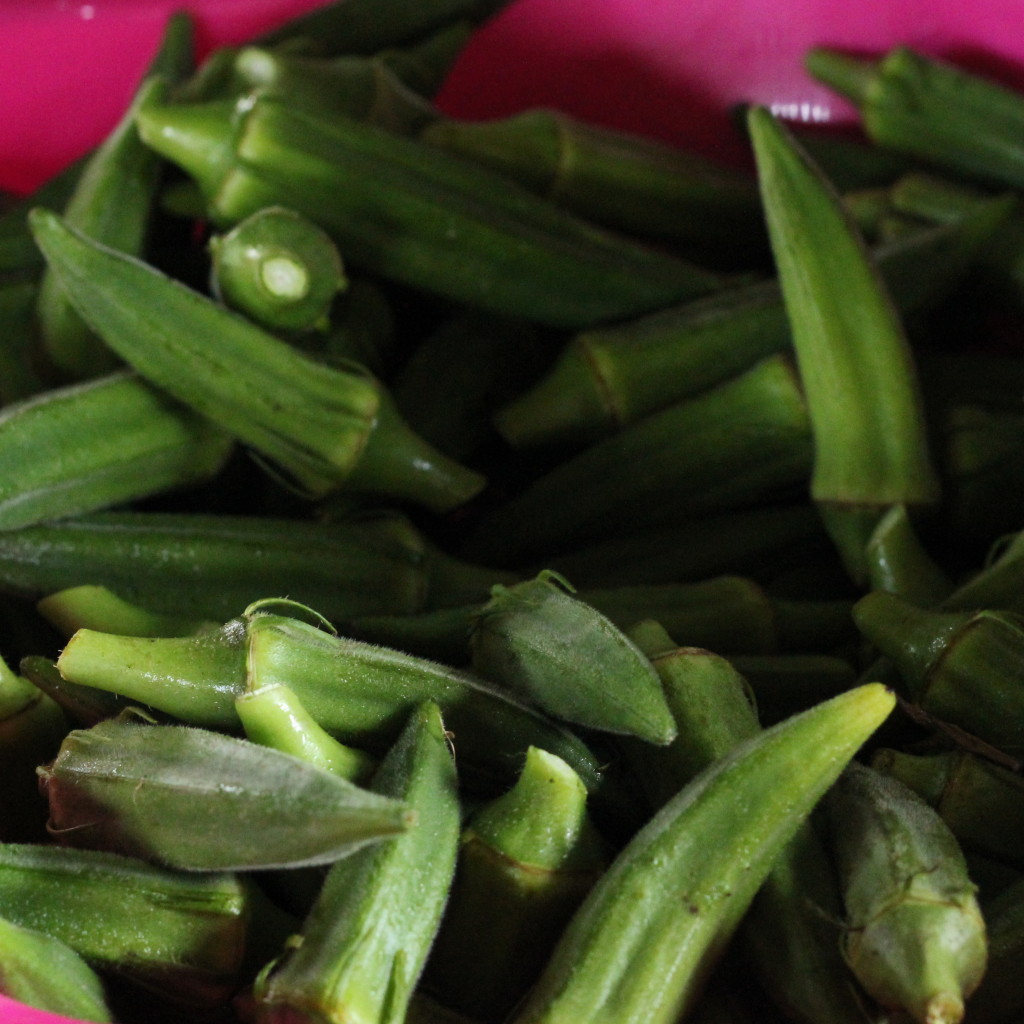
- Flavor: Somewhere between eggplant and asparagus, okra has its own unique flavor and texture.
- Nutrients: A very good source of Dietary Fiber, Vitamin A, Vitamin C, Vitamin K, Thiamin, Vitamin B6, Folate, Calcium, Magnesium and Manganese.
- Common uses: Roasted, batter-fried, in the base of gumbo
- Storage: In plastic bag in the refrigerator for 2-5 days.
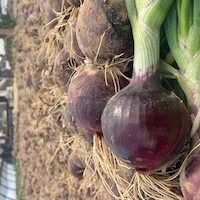
- Flavor: pungent and tear-inducing when raw to mellow and caramel-sweet when cooked
- Nutrients: Vitamins B6, C, chromium, copper, fiber, folate, manganese, molybdenum, phosphorus, potassium
- Common uses: Incredibly versatile. Enjoy them raw, sauted, braised, grilled, or roasted. Include in side dishes such as salsas, sauces and salads. Use in main dishes such as soups, quiches, casseroles, and tarts; or pickle.
- Storage: Best stored loose in the refrigerator crisper section.
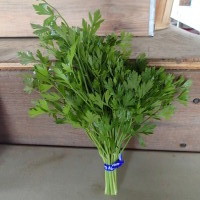
- Flavor: clean and refreshing
- Nutrients: Vitamins A, C, K, folate, iron
- Common uses: Chop and use in salads, sauces or combined with other ingredients to create rubs for chicken, lamb or beef. When cooking, include parsley at the end of your preparations to assure its flavor is maintained.
- Storage: In a plastic bag in refrigerator for several days. Flat leaf parsley can be dried and stored in an airtight container. Curly leaf is best preserved by freezing.
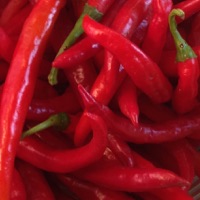
- Flavor: crunchy with varying degrees of heat
- Nutrients: Vitamins A, B6, C, K, copper, fiber, folate, manganese, potassium, thiamin
- Common uses: When handling hot peppers, be careful not to touch your face or eyes until after washing with soap and water! To seed: use a paring knife to cut in half lengthwise, remove seeds. Use raw, pickle, roast, stuff or dry.
- Storage: In a bag in the refrigerator for 3-5 days or freeze whole for later use.

- Flavor: tangy and crisp. Ripe peppers are noticeably sweeter than green ones.
- Nutrients: Vitamins A, B6, C, K, fiber, folate, manganese, molybdenum
- Common uses: Cut in half lengthwise, remove core and seeds. Enjoy raw, sauted, or roasted. Stuff and bake.
- Storage: In a bag in the refrigerator for up to a week or freeze whole for later use.

- Flavor: Sage, Oregano, Lemon Grass, Thyme, Lemon Balm, Mint, Lavender, Chives
- Nutrients: Many
- Common uses: Use fresh or dried in all sorts of dishes
- Storage: In a bag in the fridge for up to a week or dry for later use.
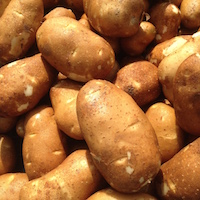
- Flavor: starchy and satisfying
- Nutrients: Vitamins B6, C, copper, fiber, manganese, potassium
- Common uses: Just prior to preparing, scrub under cold running water. You do not need to peel them. Remove any blemishes or bruises, if necessary. Boil, bake, fry, roast, saute, or mash for use in various dishes.
- Storage: Store in a cool, dark place. Best stored in the crisper of the fridge. Will store for more than a month in the fridge.

- Flavor: delightfully bitter
- Nutrients: Excellent source of Vitamin K and antioxidants due to the pigment of the leaves. These antioxidants help protect your eyes from harmful ultraviolet waves. It is also a moderate source of B-complex vitamins.
- Common uses: Raw in salads for maximum bitterness. Halved and roasted whole with honey & lemon juice. Can also be sauteed with garlic.
- Storage: In plastic bag in the refrigerator for about a week.
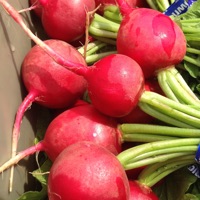
- Flavor: crisp and crunchy with peppery bite
- Nutrients: Vitamin C, fiber, folate, potassium, magnesium
- Common Uses: Slice or chop in salads or as garnishes; saute or roast in butter or oil for a simple side dish; toss greens in salads, stir-fries and soups.
- Storage: Separate leaves before storing. Keep roots in the crisper and store leaves in a plastic bag in the fridge. Eat the greens within a couple of days.

- Flavor: sweet & tart raspberry flavor
- Nutrients: Vitamin C, manganese, fiber
- Common uses: Eaten fresh, with yogurt, added to smoothies, baked into muffins, or added to pancakes.
- Storage: Eat immediately or hide from other family members and freeze : ) May last for a couple of days in an open bowl in the fridge.

- Flavor: earthy and slightly sweet root vegetable
- Nutrients: Vitamin A, C, fiber, potassium
- Common uses: Peel, then: Boil, steam, roast, mash or puree for use in side dishes, soups and sauces.
- Storage: In a plastic bag in the refrigerator for up to a month or in crisper.
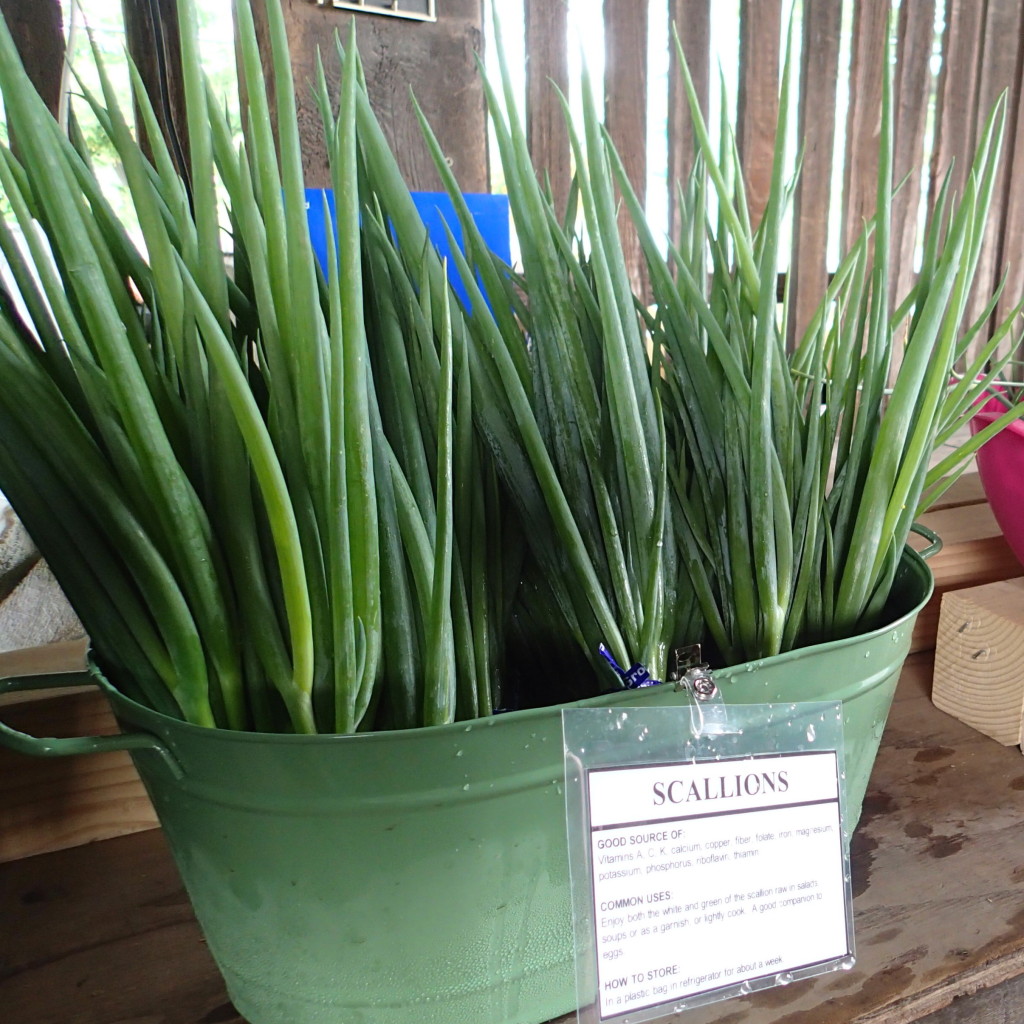
- Flavor: delicate & crisp onion flavor
- Nutrients: Vitamins A, C, K, calcium, copper, fiber, folate, iron, magnesium, potassium, phosphorus, riboflavin, thiamin
- Common uses: Enjoy both the white and green of the scallion raw in salads, soups or as a garnish; or lightly cook. A good companion to eggs.
- Storage: In a plastic bag in refrigerator for about a week.
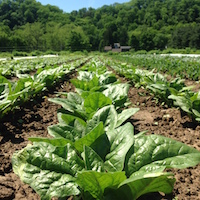
- Flavor: tender & slightly bitter
- Nutrients: Vitamins A, B1, B2, B6, C, E, K, beta carotene, calcium, copper, fiber, folate, iron, magnesium, manganese, potassium, phosphorus, protein, zinc
- Common uses: Enjoy raw in salads, steamed, or saute with garlic.
- Storage: Loosely packed in a plastic bag in the refrigerator crisper for about 5 days. Best if first rinsed and then spun dry in a salad spinner. Can be blanched and frozen.
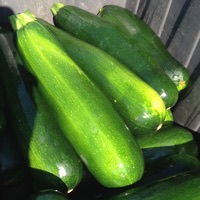
Summer Squash (includes Zucchini)
- Flavor: takes on the flavors of everything else
- Nutrients: Vitamins A, C, K, copper, calcium, fiber, folate, magnesium, manganese, potassium
- Common uses: Enjoy raw or steamed. Saute and add to pasta dishes. Bake, grill, fry, or roast. Grate and use in quick breads or muffins.
- Storage: In a plastic bag in refrigerator for several days or blanch and freeze for later use.

- Flavor: sweet ‘n’ cheerful
- Nutrients: Vitamins A, B6, C, copper, fiber, iron, manganese, potassium
- Common uses: Bake, mash, roast, or saute. Best roasted.
- Storage: Best stored at room temperature on the counter top. Should store for many weeks.
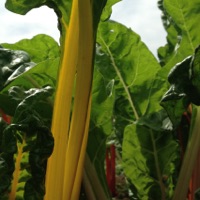
- Flavor: bitter, slightly salty; mellows when cooked
- Nutrients: Vitamins A, C, E, K, beta carotene, copper, calcium, fiber, iron, magnesium, manganese, potassium
- Common uses: Add raw leaves to salads. Boil, steam, saute or bake leaves and stems. Include in pasta dishes and omelettes or substitute when recipes call for cooked Spinach.
- Storage: In a plastic bag in the refrigerator for several days. Chard can also be blanched and frozen for later use.

- Flavor: loosely similar to spinach, sometimes with a slight mustard flavor
- Nutrients: Vitamins A, C and K, beta carotene, calcium, potassium, phosphorus and iron
- Common uses: Eat raw in salads, toss in soups just before serving; saute, or steam.
- Storage: Store in a plastic bag or container in the refrigerator. Best if first rinsed and spun dry in a salad spinner.

- Flavor: subtly sweet and juicy
- Nutrients: Vitamins A, B2, B3, B6, C, K, chromium, copper, fiber, folate, manganese, molybdenum, potassium, thiamin
- Common uses: Enjoy raw, use in sauces, salsas and soups; bake, grill, or roast.
- Storage: At room temperature on the counter top, away from direct sunlight for up to a week or freeze (whole, sliced or chopped) for later use.

- Flavor: sweet and amazing
- Nutrients: Vitamins A, B2, B3, B6, C, K, chromium, copper, fiber, folate, manganese, molybdenum, potassium, thiamin
- Common uses: Enjoy raw, use in sauces, salsas and soups; bake, grill, or roast.
- Storage: At room temperature away from direct sunlight for up to a week or freeze (whole, sliced or chopped) for later use.
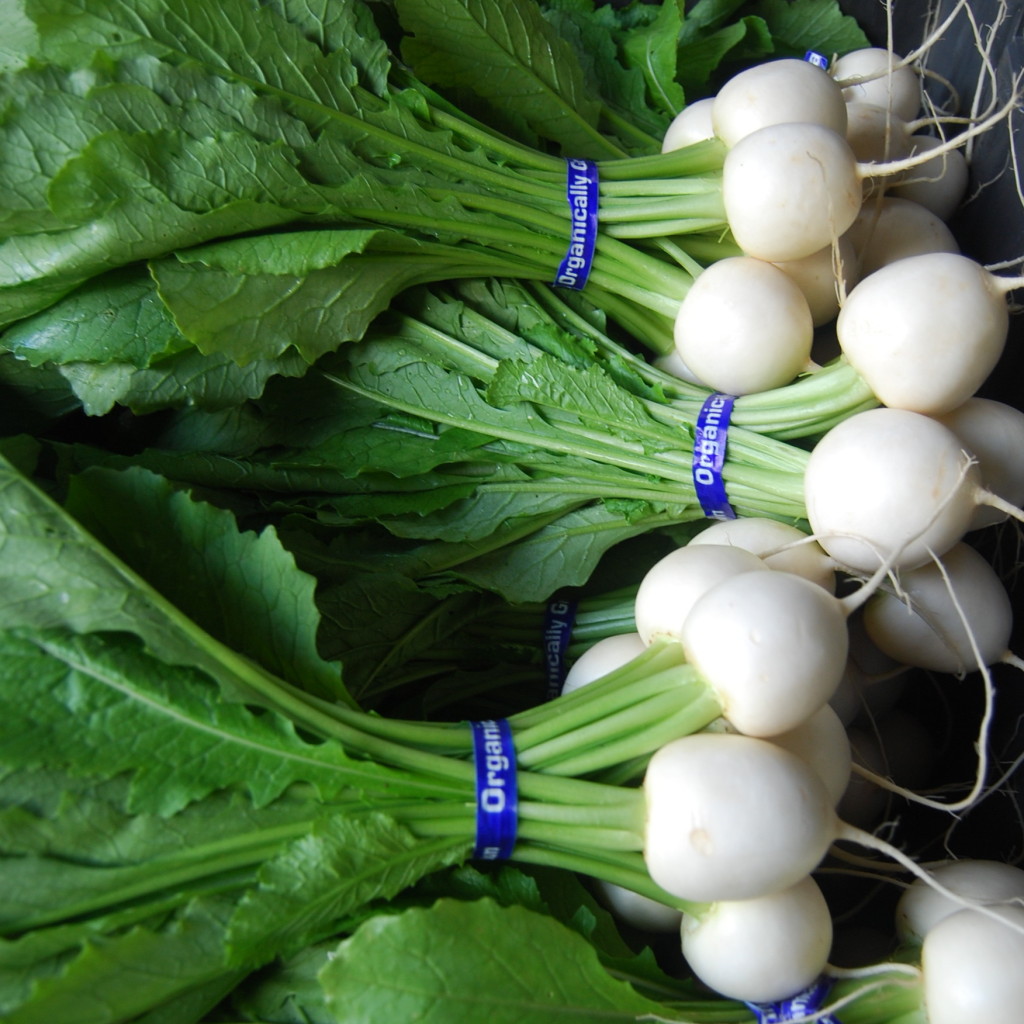
- Flavor: sweet and nutty with a hint of heat
- Nutrients: Vitamin C, calcium, fiber, folate, manganese, potassium; greens provide Vitamins A, B6, E, K and copper
- Common uses: Eat raw in salads. Steam in a small amount of salted water, roast or mash. The greens can be steamed, blanched, or added to soups & stir-fries. Greens are best sauteed with garlic.
- Storage: In the refrigerator (roots separate from greens) for a week. Eat the greens within a couple of days.

- Flavor: delicious
- Nutrients: Vitamin A, B1, B6, C, magnesium, potassium, zinc.
- Common uses: Enjoy watermelon on its own or in fruit salads. The seeds are a great source of zinc, which helps to prevent prostate cancer. You can eat the seeds.
- Storage: At room temperature for a couple of days. Best stored in the fridge and even better if eaten right away!

- Flavor: mildly sweet, sometimes nutty
- Nutrients: Vitamins A, B1, B3, B5, B6, C, copper, fiber, folate, manganese, omega 3 fatty acids
- Common uses: Halve and roast face-down in an inch of water. Peel, chop and saute or use in soups, main and side dishes, and desserts.
- Storage: In a cool, dry place for between one week and six months depending on variety. Cut winter squash should be wrapped in plastic, refrigerated, and used within two days.
